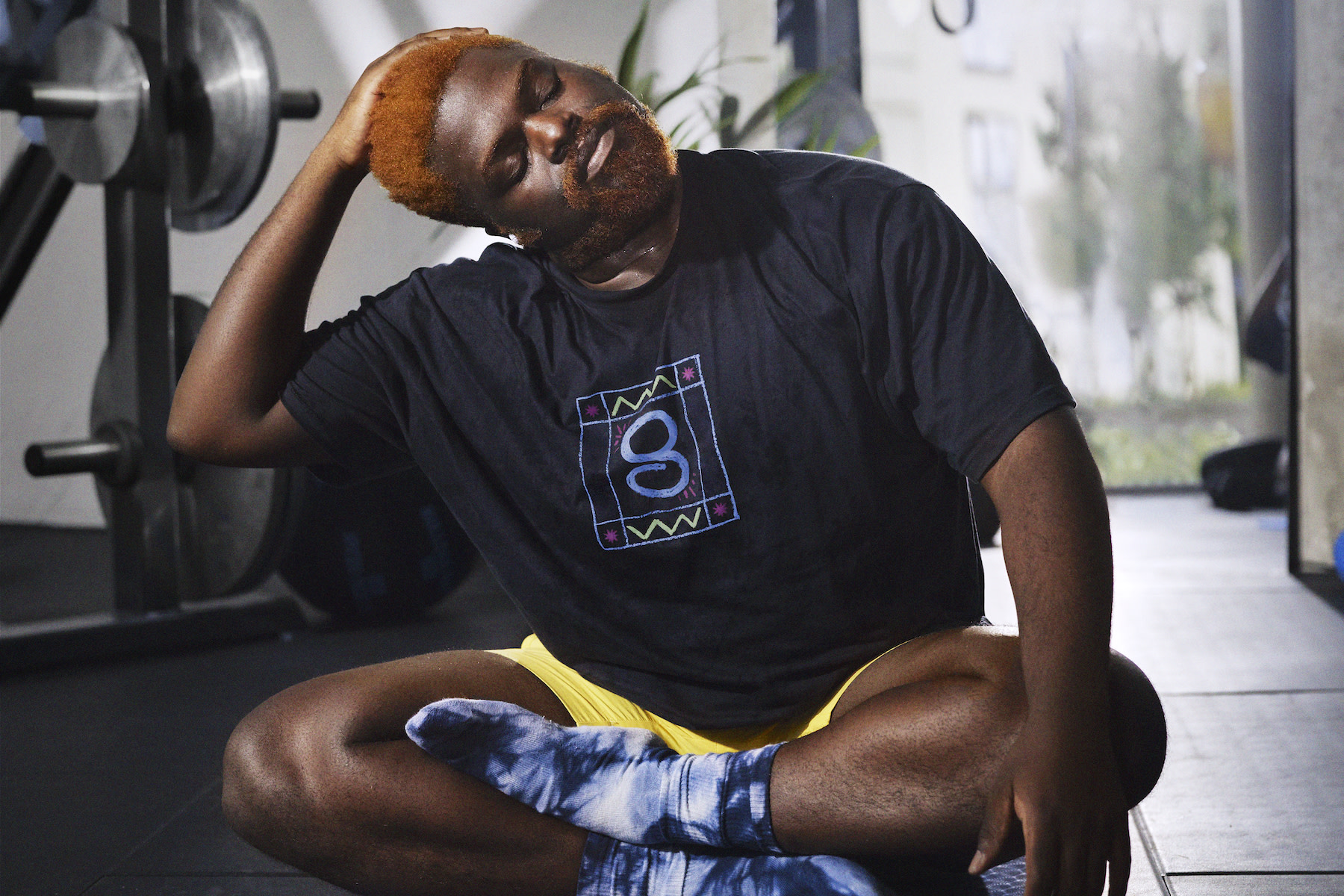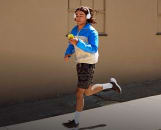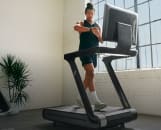
How to Prevent Muscle Cramps from Derailing Your Workout
Uncomfortable at best and painful at worst, cramping can turn a good workout into a bad one, fast.
By Jessica Migala•
What Are Muscle Cramps?
What Causes Muscle Cramps During Exercise?
How to Prevent Muscle Cramps During Exercise
How to Stop Muscle Cramps Fast
There are some things that can tank an otherwise good workout: sudden rain, stomach distress, feeling like your legs are especially sleepy today. Another annoying interrupter? Muscle cramps during exercise.
It’s tough when you’re in the zone and suddenly you feel a painful cramp that requires you to take a pause. It’s happened to most of us, but some people deal with muscle cramps way more often than others. If that’s you, here’s how to handle a spasm in the moment and how to prevent them from happening again.
What Are Muscle Cramps?
A muscle cramp is when your muscle suddenly and unpredictably contracts and tightens. Or, as the American Academy of Orthopaedic Surgeons (AAOS) puts it, “a muscle cramp is an involuntary contraction of a muscle that occurs suddenly and does not relax.” That can cause light discomfort to more intense pain lasting for a few seconds to 15 minutes or longer, the AAOS says. You may also be able to see your muscle cramping.
Muscle cramps and muscle spasms are often used interchangeably, but cramps tend to last longer and be painful.
What Causes Muscle Cramps During Exercise?
Several factors can set the stage for a muscle cramp during exercise. Here are a few causes at play.
1. Dehydration
Dehydration and muscle cramps go hand in hand. Inadequate hydration stymies blood flow, and blood flow is necessary for proper muscle function because it carries nutrients and oxygen to working muscles and helps remove waste from the muscle, according to the University of Rochester Medical Center.
“If you don’t have enough fluid in the body, your body will shunt whatever fluid it does have to your working heart and brain,” explains Balu Natarajan, MD, founder of Chicago Primary Care Sports Medicine and provider at The Running Institute. In other words, your body will prioritize your fluid needs to vital organs—not your legs. “Your body is trying to make sure you don’t pass out or faint,” he says. While that’s great for your health overall, it’s one frustrating reason why we get muscle cramps after heavy exercise.
2. Heavy Sweating
You lose electrolytes through sweat. Electrolytes are minerals—calcium, chloride, magnesium, phosphorus, potassium, and sodium—that carry an electric charge and affect both your hydration and muscle function, according to the National Library of Medicine.
Sodium is one of the main electrolytes of concern in exercise—and some people also sweat salt more than others, putting them at an increased risk for muscle cramping, says Dr. Natarajan. “They are what we call salty sweaters,” he says.
Another key electrolyte for muscle function? Potassium, which can also be lost through sweat. To a less extent, magnesium is also excreted through sweat.
3. Weather
High heat or humidity is a double whammy here, as stifling temps are more likely to cause excessive sweating that can lead to dehydration and a loss of electrolytes, says Dr. Natarajan.
4. Not Having Enough Fuel In the Tank
If you’re not eating enough—or not eating a balanced diet—you may also be at a higher risk. “There are a series of chemical reactions that occur to get one muscle to move, and these processes require a combination of carbohydrate, fat, and protein to work,” says Dr. Natarajan.
5. Muscle Fatigue
Whether you haven’t fully recovered from a prior workout, you’re going long and hard, or it’s just one of those days, muscle fatigue can lead to a cramp. “When a muscle is fatigued and tries to relax, sometimes the natural tendency is to contract instead,” says sports dietitian Amy Goodson, RD, of The Sports Nutrition Playbook.
The above are all factors that contribute to cramping during exercise. But what about muscle cramps after exercise? This type of cramping is more related to muscle tightness, injury, and lack of electrolytes, Dr. Natarajan says. The good news: You can find relief from both types of muscle cramping with the tips below.
How to Prevent Muscle Cramps During Exercise
When you’ve been through a muscle cramp once, you’ll want to figure out how to get rid of muscle cramps and prevent them from happening again. While muscle cramps are generally unpredictable—research suggests you don’t know when they’ll strike—there are a few steps you can take to decrease your risk.
1. Train Progressively
Even if you don’t have a race or event on the calendar, if you’re going on a ride, swim, or run, start with a shorter duration or distance and work up from there.
“Don’t go from zero to running a 10K,” Dr. Natarajan says. “The purpose of training is for your body to learn how to, for example, run a mile and then run two miles. It’s important to ease into physical activity,” he says. So, follow a training plan and make sure that you’re also building in rest and recovery days.
2. Practice
If you do have an event on the horizon, practice in conditions that will mimic what you’ll experience in the race or event. “Practicing is a big deal for prevention,” says Dr. Natarajan.
For instance, that’s doing short and long runs in the summer heat as you build mileage, rather than always taking them indoors to a gym treadmill where there’s air conditioning. Your body needs time to get acclimated to the environment. (These tips can make the transition from treadmill to outdoor running easier.)
3. Warm up Right
Get your muscles prepped and ready for the work ahead. That can be something as simple as walking or doing some muscle activation exercises. For more formal warm-ups related to your sport, the Peloton App has five- and 10-minute warm-ups you can do before a run, ride, or strength workout.
It’s worth noting that unfortunately, warming up probably isn’t a silver bullet for preventing muscle cramps during exercise. Some research shows that stretching prior to a workout doesn’t decrease the risk of cramping during a workout, per a very small randomized controlled trial in the journal Muscle & Nerve.
But even though it may not be a totally preventative measure, stretching can, however, help to relieve cramps in the moment.
4. Eat Something Beforehand
If you go into a workout under-fueled—meaning you don’t have much in the way of carbohydrate stores—“you run the risk of being low on energy, which can make muscles fatigue faster,” Goodson says. Not everyone will need a pre-workout snack (like if you’ve recently had a meal), but if you haven’t eaten in several hours, having a small snack like yogurt and fruit or a piece of whole grain toast and nut butter can get the job done.
5. Hydrate
Drink up! “My recommendation is to divide your weight in pounds by two and drink that many ounces of fluid per day,” Goodson says. Also, keep in mind that everything from water, sports drinks, smoothies, tea, and chocolate milk all “count” as fluid.
If you think you may not be hydrating properly for exercise, here are a few best practices to remember:
Drink 16–24 ounces of fluid around two hours before exercise.
Drink another 8 ounces 15 minutes before starting.
Continue to hydrate with another 16–32 ounces every 30–60 minutes during exercise.
After exercise, rehydrate with 16–24 ounces of fluid.
If you’re exercising for longer than 90 minutes, in a hot, humid environment, or doing a two-a-day workout, Goodson recommends a sports drink that contains carbohydrates and electrolytes.
If your urine is pale yellow or clear, you are adequately hydrated, she adds.
6. Have Some Electrolytes
Sodium and potassium are the main electrolytes lost through sweat, Goodson reminds us, though sodium is more often the culprit to cramping. If your workout clothes develop white streaks on them after exercise, you’re a salty sweater and should prioritize sodium, which you can get from sports drinks or a pre-workout snack.
7. Recover with Hydrating Foods
Carbohydrates replenish glycogen in muscles (stored fuel) while protein helps rebuild muscles, Goodson says. Smoothies and chocolate milk are two examples that hit on both while also helping your body rehydrate. But make sure to get in some fuel rather than solely sipping H2O: “Water is a good hydrator, but not rehydrator. We really need protein, carbs, and electrolytes,” Goodson notes.
Related Articles

Nutrition
Electrolytes Are About More Than Just Hydration. Here Are 5 Key Benefits to Know

Health
Wait, Can Pickle Juice Actually Relieve Muscle Cramps During Exercise?

Health
6 Possible Reasons Why You Experience Muscle Twitching After a Workout

Health
5 Signs You Have Salty Sweat—and What to Know If You Do
How to Stop Muscle Cramps Fast
It’s disheartening when your workout goes south because you have a muscle cramp. Unfortunately, the only thing you can do to stop a muscle cramp fast is to stop exercising. But you don’t have to stop in your tracks right away—you can wait it out for a bit.
“I tend to use the ‘half-mile rule’ with running and the ‘one-mile rule’ with biking,” Dr. Natarajan says. He will keep going and push through the cramp for the half or full mile distance. If the cramp is not better or is getting worse, he will stop and walk. At that point, you may be able to walk it off, and you can decide if you start again or call it.
If you are in extreme pain (or anything else that makes you truly worried), you should listen to your body and stop sooner.
“Muscle cramps should dissipate as soon after exercise is over,” Dr. Natarajan says. If the pain or discomfort lingers, you can try stretching the specific muscle, which can help relieve tightness.
If that still doesn’t help, Dr. Natarajan says you can take over-the-counter medication, such as acetaminophen or NSAIDs like ibuprofen, so long as it’s recommended by your doctor. But before popping one of these OTCs, it’s important to consider what else is going on with your health, he says. For instance, acetaminophen can cause liver toxicity if taken with alcohol, and NSAIDs can be tough on your kidneys if you’re dehydrated.
If muscle cramps are so painful they impact your ability to function throughout the day or they wake you up from sleep, something more may be going on, such as an injury or an underlying condition, like thyroid or blood pressure problems. If that’s the case, consult with your doctor.

Peloton App
Access thousands of classes with no equipment needed.
This content is for informational and educational purposes only and does not constitute individualized advice. It is not intended to replace professional medical evaluation, diagnosis, or treatment. Seek the advice of your physician for questions you may have regarding your health or a medical condition. If you are having a medical emergency, call your physician or 911 immediately.
Get our latest health stories straight to your inbox
Enter your email to get articles, expert-backed tips, and updates from Peloton sent to your inbox.
By providing your email address, you agree to receive marketing communications from Peloton.
For more about how we use your information, see our Privacy Policy.






